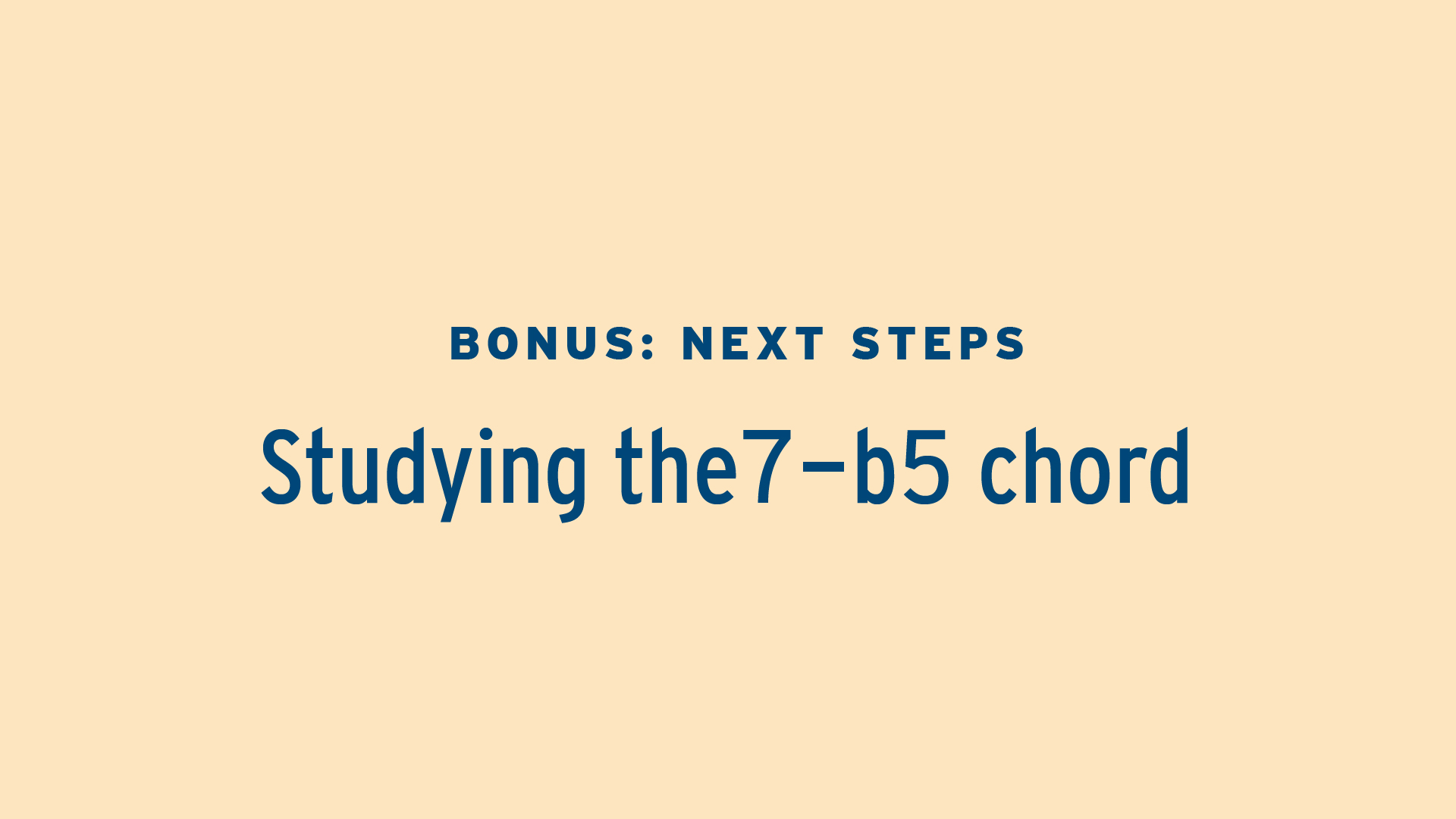The last chord of the major scale that we need to study is the seven chord which we write as 7-b5. This is a half diminished chord. This chord almost never appears in popular music, but you'll hear it often in jazz and classical music.
The 7-b5 has a very dark and mysterious sound, and it's normally used in a minor context where the 6- chord is the tonal center. This chord appears in lots of jazz standards, and it's usually accompanied by the 3D chord (the 7-b5, 3D, 6- progression), which we will study later in Mixed Harmony.
What we can do now is study the 7-b5 chord in isolation, pairing it just with the 6- chord for context. This will give you a great foundation for what's coming next in Mixed Harmony.
IFR materials you will need
For all of the activities described below (and on the subsequent pages), you will need the following two resources:
IFR Jam Tracks Level 3: Pure Harmony Advanced Sing the Numbers 3: Melody Paths
After you have purchased these two courses, all of the links below will take you directly to the appropriate lesson pages.
Let's get started!
Below are the activities that will allow you to explore the mysterious 7-b5 chord for yourself:
1) Practice with IFR Jam Tracks Level 3: Pure Harmony Advanced
Lesson 15 - Chords 6- and 7-b5
Practice the following activities over each jam track:
a) Observe the sensation of the 2 chord. Just listen to the backing track and try to feel this chord without playing or singing anything. Just listen and feel. b) Sing/play the roots of the chords over the backing tracks (in many keys). c) Sing/play Melody Paths over the backing tracks (in many keys). The ultimate goal for this exercise is to be able to sing melody paths without the help of the instrument and without having to look at the drawing of the chord columns. d) Improvise freely over the jam tracks.
2) Sing the Numbers 3: Melody Paths
While you sing along with me over the following tracks, I want you to notice the dark and unresolved sensation of the 7-b5 chord, and how it pulls you away from the 6- chord. Feel how pleasant it is to go back to relax in the 6- chord again.
Lesson 20 - Chords 6- and 7-b5
I hope you have enjoyed this course very much! You now have a powerful process for adding any new chord to your repertoire. I hope that you'll apply these principles to all of the chords that you are studying in IFR, and that your journey is filled with beautiful discoveries.
Links to all extra activities
Lesson video: Where to go from here? Next steps: The 2- chord in a major context Next steps: The 1, 6-, 2-, 5D progression Next steps: The uplifting movement from 1 to 3- Next steps: Studying the 3- chord with its neighbors Next steps: Chords 2- and 3- in a minor context Next steps: The 6-, 5D, 4, 3- progression Next steps: Studying the 7-b5 chord
